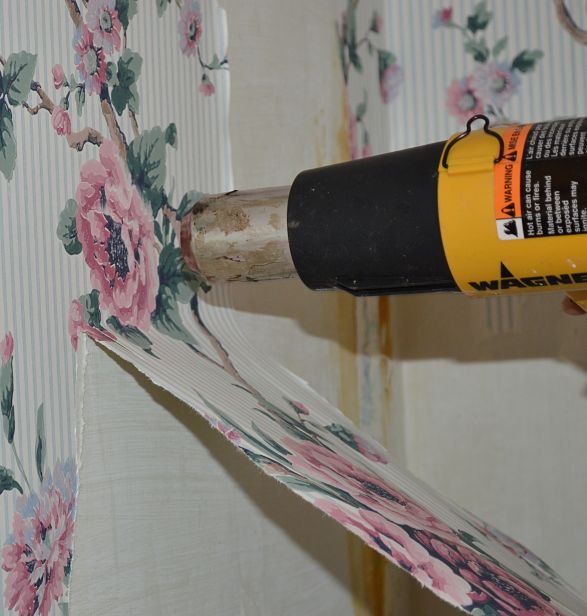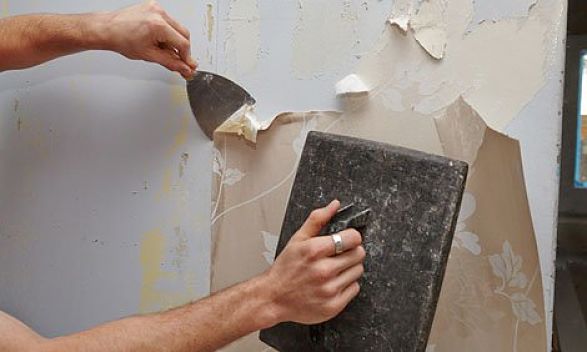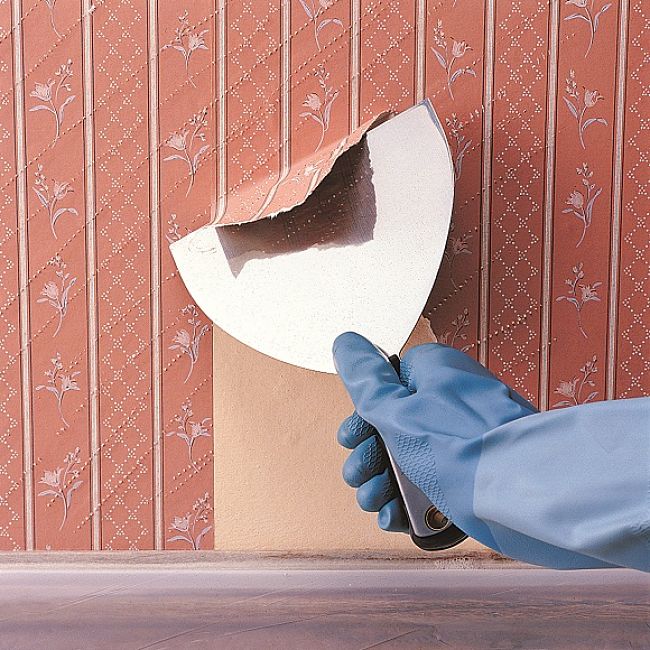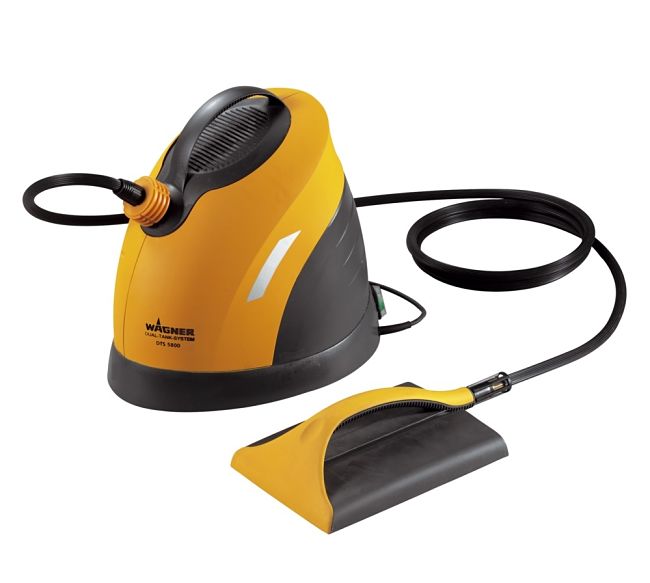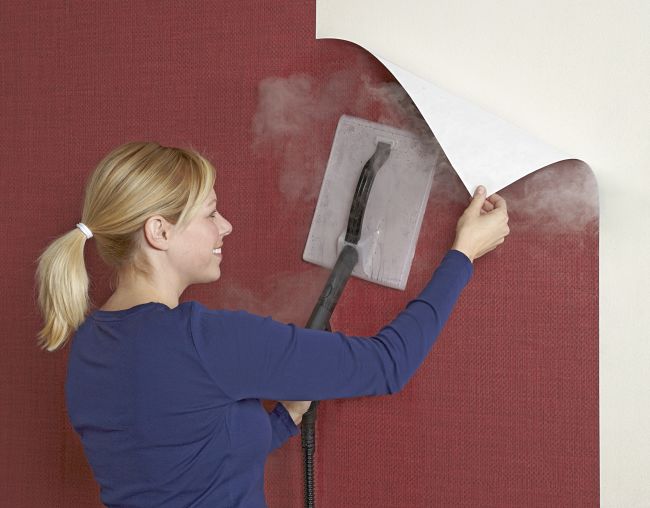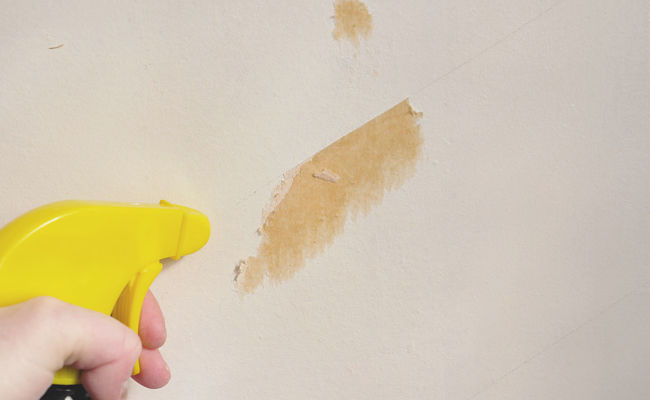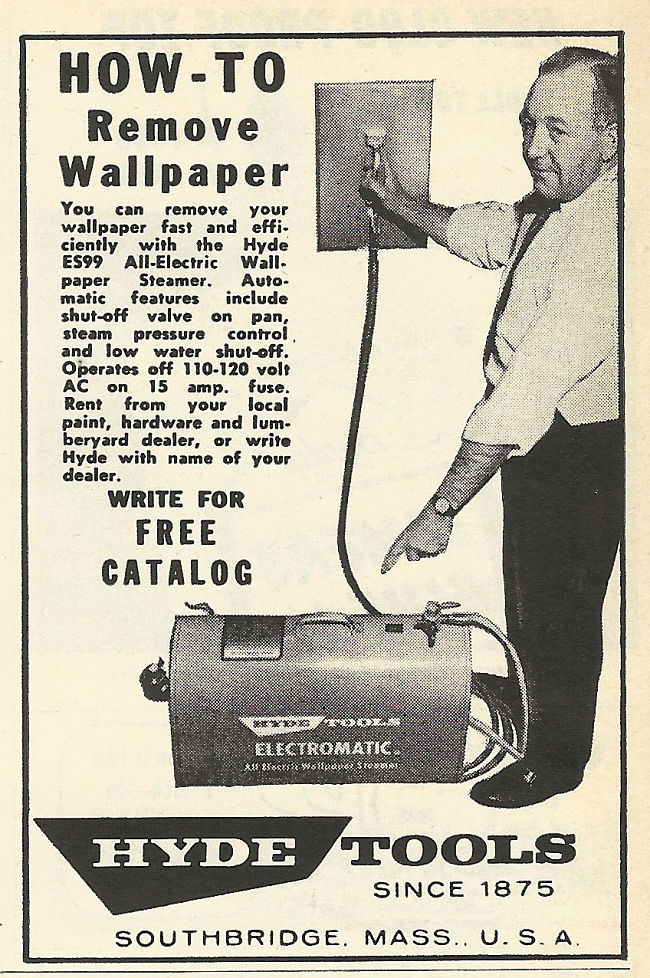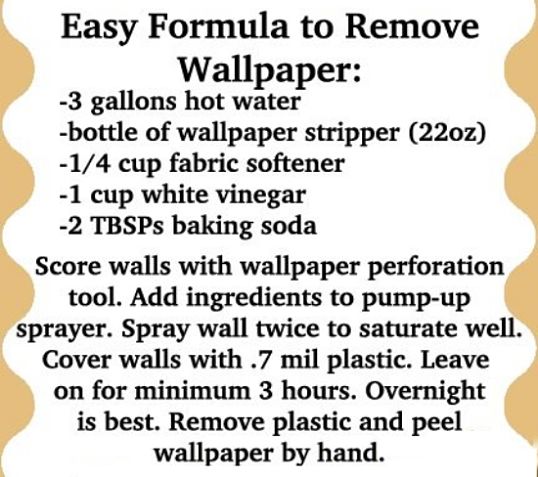Q&A: Best Way to Remove Wallpaper, Glue, Paste Residue and Borders
Wallpaper usually consists of two or three layers of material; a decorative outer layer and two thinner layers underneath. The nature of the wallpaper has changed over the years and this means you may have to try various methods that will work with the wallpaper you are wanting to remove.
Removing the paste residues and borders can be problematic. Sometimes you can be very lucky and wallpaper can quite simply be pulled off dry without using any scoring tools soaking, scraping or chemicals. At other times it will be much harder to do.
The good news is that this article provides a review all the expert advice and lots of helpful hints to get you started to complete the removal of your wallpaper.
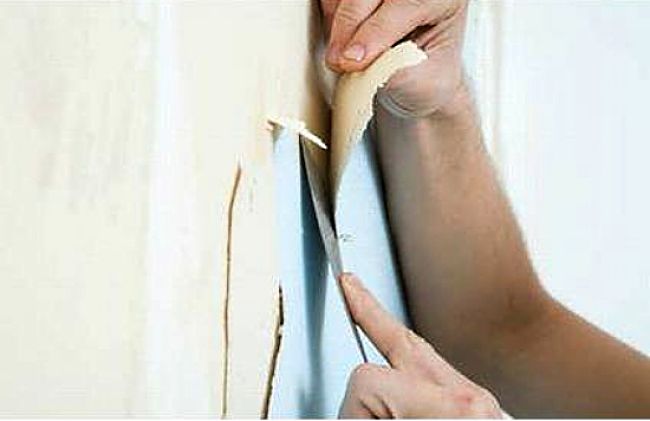
Types of Wallpapers and How to Remove Them
Stripable Wallpapers
Most strippable wall coverings have smooth, plastic outer coverings that include vinyl, fabric-backed paper, fabric-backed vinyl, etc. But you can only really test if the wallpaper is really strippable by simply trying to peel it off the wall. Here's how:
Pry an inconspicuous corner of the wallpaper at the top of a wall with a scraper edge or a knife blade.
Keeping the paper close to the wall, and pull it off using a downward motion.
Beware that pulling the paper away from the wall and toward you makes it more likely that it will tear, and a downward motion is less risky.
If the wallpaper is strippable, it should peel away relatively easily with no more that steady, low to moderate pressure.
On walls made of drywall, plaster or similar material, to which a primer was added before the wallpaper was applied, the best removal method is to slowly scrape or peel it away from the wall without wetting it. However, for drywall or plaster that has not been primed simply has a sheet of paper as the outer coating. The wallpaper may have been glued directly onto this paper. If you try to pull the wallpaper off the plaster without softening the glue you could disturb the wall surface leading to a messy disaster that is very hard to fix. Before you apply wallpaper you should apply a priming layer to the drywall so that the wallpaper can be removed later. If there is no primer you will have to wet the wall thoroughly with water before removing the wallpaper. With care, this method can work well.
Firstly pull off the top layer of wallpaper, and then soak the under-layer with warm water. To do this direct the stream of water at the top of the wall using a garden-type compression water sprayer until water starts to run down the wall. You will need to really wet the surface thoroughly. Let the water soak into the under-layer for about 10-15 minutes before attempting to remove the wallpaper. Let the water do the work, and get it really wet and let it soak in to soften the glue. Add more water if needed.
Then use a scraper or putty knife to slowly remove the wallpaper. Gently slide a scraping tool under the wet paper - pushing or lifting the wallpaper away. The drywall may get wet, but provided the outer liner is not disturbed, it will dry-out without major problems. When done properly there will be no gouges in the drywall that need to be repaired and the paper layer will remain intact. The surface can be lightly sanded before applying paint or other coverings.
Non-Strippable Wallpaper Removal
Preparations Before Removing Wallpaper
Stripping and eliminating wallpaper can be a very untidy task. Before beginning to remove old wallpaper, cover the floor and furnishings with plastic of other covering materials.
Make sure you have all the tools you need for the method you have selected including spray devices, scrapers and special tools. Many persons use scoring devices that is rolled over the wallpaper creating a series of small indentations and perforations in the wallpaper.
These pin-pricks, allow water or chemicals to soak into the wallpaper and help to wet the glue underneath. However these scoring devices can make permanent indentations in drywall and other soft surfaces that may remain after painting.
So always ensure you don't use too much pressure and do some experiments in a small inconspicuous locality before scoring the whole wall.
If you are going to spray the wallpaper with chemicals, such as a liquid paper remover, always use a painters' mask to keep from inhaling chemicals. A mask is also a good idea when sanding off the surface after the paper is removed.
Slitting and Soaking to Remove Wallpaper
With this method, you make a series of horizontal slits across the surface of the wall paper with a razor blade, a utility knife, or a special paper stripper tool that is available at hardware stores.
It is also a good idea to use a scoring too, mentioned previously called a 'Paper Tiger'.
This device has a small roller with needle-like protrusions to score the surface of the paper, without damaging the wall underneath.
Make a series of slits 8-10 inches (20 cm) apart. Make the indentations and apply a liquid paper remover or warm, soapy water to each strip to wet the adhesive allowing you to pull or scrape the wallpaper from the walls. You can apply the liquid with a spray bottle, cloth or a sponge.
Apply the paper remover or water and let it soak into the wallpaper for a few minutes. Wet several strips at a time and then go back to the first and wet it again. Using a 3 1/2 inch (8 cm) wide wall scraper with a flexible blade, start stripping the paper.
A section the width of the scraper should wrinkle up above it as you push, or come off as a strip as you pull it off. Continue pushing and pulling while the paper is easy to remove.
If the paper breaks or becomes harder to remove, re-soak that area. If the adhesive is clearly not being wet and loosened by simply soaking, you will have to use another method such as steaming of a chemical method to soften the glue.
Steaming to Remove Wallpaper
You can hire a wallpaper steamer that makes the job easier and avoids having to use chemicals. The unit blasts the wall with steam similar to an iron used for pressing clothes. Forcing steam into the wallpaper, softens the paper and weakens the paste. The paper can then be stripped with a putty knife.
Take care however as over-aggressive steaming can cause damage to paper-lined dry wallboards and plaster, especially if the surface wasn't properly sealed before the wallpaper was applied.
Chemical Treatments to Strip Wallpaper
Various chemical wallpaper strippers have been developed that can be added to hot water to help break down the glue. Some include special enzymes that helps dissolve the paste. One important tip is to use a scoring device to help the chemical penetrate and to allow sufficient time for the chemical to do it's work.
Handy Tips for Removal Wallpapers and Paste Residues
If the outer coating of the wallpaper is vinyl, you will have to tear off the vinyl face layer first because neither the chemical stripper or steam penetrate the vinyl to soften the glue.
Once the wallpaper and glue residues have been removed, remember to give the wall surfaces a light sanding to eliminate any remaining roughness and create a surface suitable for binding the paint, wallpaper or new coating you are going to apply.
If you intend to paint the walls, use a good quality sealing, oil-based primer as a base coat. After the primer has dried thoroughly, you can sand it and apply the new paint.
Use a Fabric Softener - Many people find this easy method of stripping wallpaper works well. Simply add about one part liquid fabric softener and two parts water into a spray bottle. Shake well, spray the mixture on the wallpaper and allow a few minutes for the liquid to soak in.
Dishwashing Liquid - Once again many people have found that this method works well with particular brands of dishwashing liquid such as'Dawn'. Simply mix about one part dishwashing liquid to about ten parts of hot water.
Vinegar - Many people have found white vinegar to assist with stripping old wallpaper. The acid in the vinegar seems to help softens the glue. Mix about one part of white vinegar with about eight parts of hot water. The odor quickly fades as the wall dries.
Tri Sodium Phosphate - When simply home remedies do not work it may be time for a steamer or a stronger chemical approach. You can buy tri sodium phosphate (TSP) from most hardware stores or other commercial chemical strippers. Follow the instructions supplied.
The best way to remove the wallpaper border depends on the type of wallpaper used. It also depends on what type of surface the wallpaper was glued to and what type of adhesive was used. One of the easiest things to try is to use a hair dryer to heat the wallpaper border. This may loosen the adhesive enough to let you simply peel it off.
Generally, if the border has been glued to wallpaper, it will come off fairly easy. Slightly moisten it with a light spray and use a plastic scraper to remove it from the wall.
If the wallpaper border has a vinyl covering that prevents water or any commercial wallpaper remover soak through to soften the border, you will need to use a perforation tool applied over the entire surface of the border to allow moisture to penetrate.
If the wallpaper border has been glued directly onto a painted wall, use warm water and some commercially available wallpaper remover. Allow plenty of time for the water to soak in before you try to scrap it off.
Steaming also works well for removing wallpaper borders. Steam the entire surface of the wallpaper border. Start from the bottom to the topmost part of various sections. If the adhesive is very strong, steam the boarder twice or more until the wallpaper boarder starts to loosen from the wall.
Use caution when removing border from existing wallpaper. The same strippers that weaken the adhesive in the border may also soak through to the wallpaper and weaken the bond with the wall. Once the border is removed, wipe the area clean to remove any remaining liquid or stripper.
